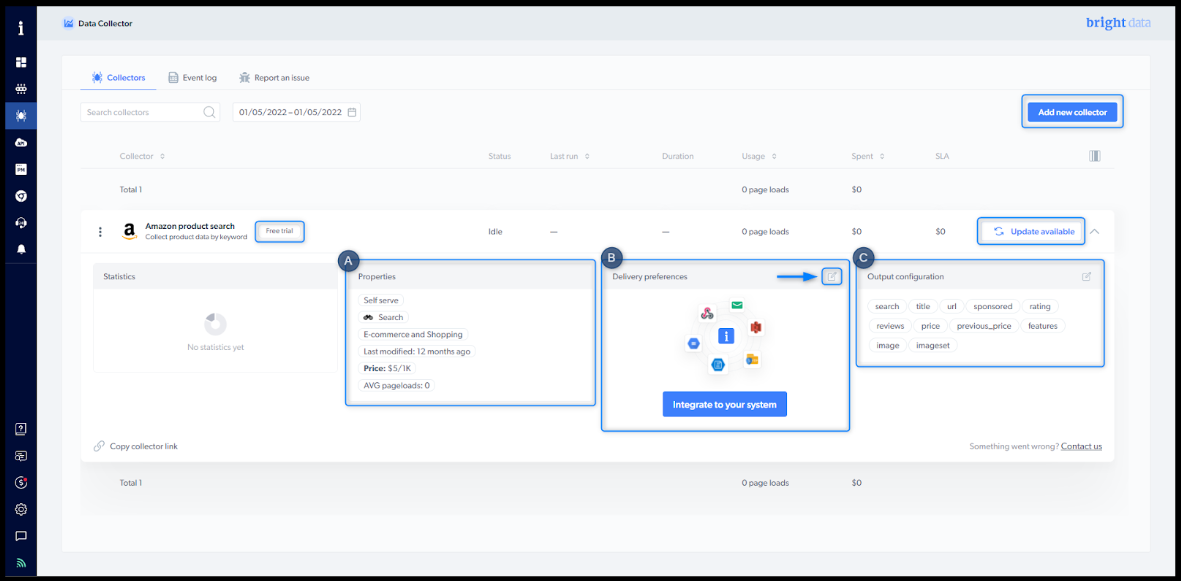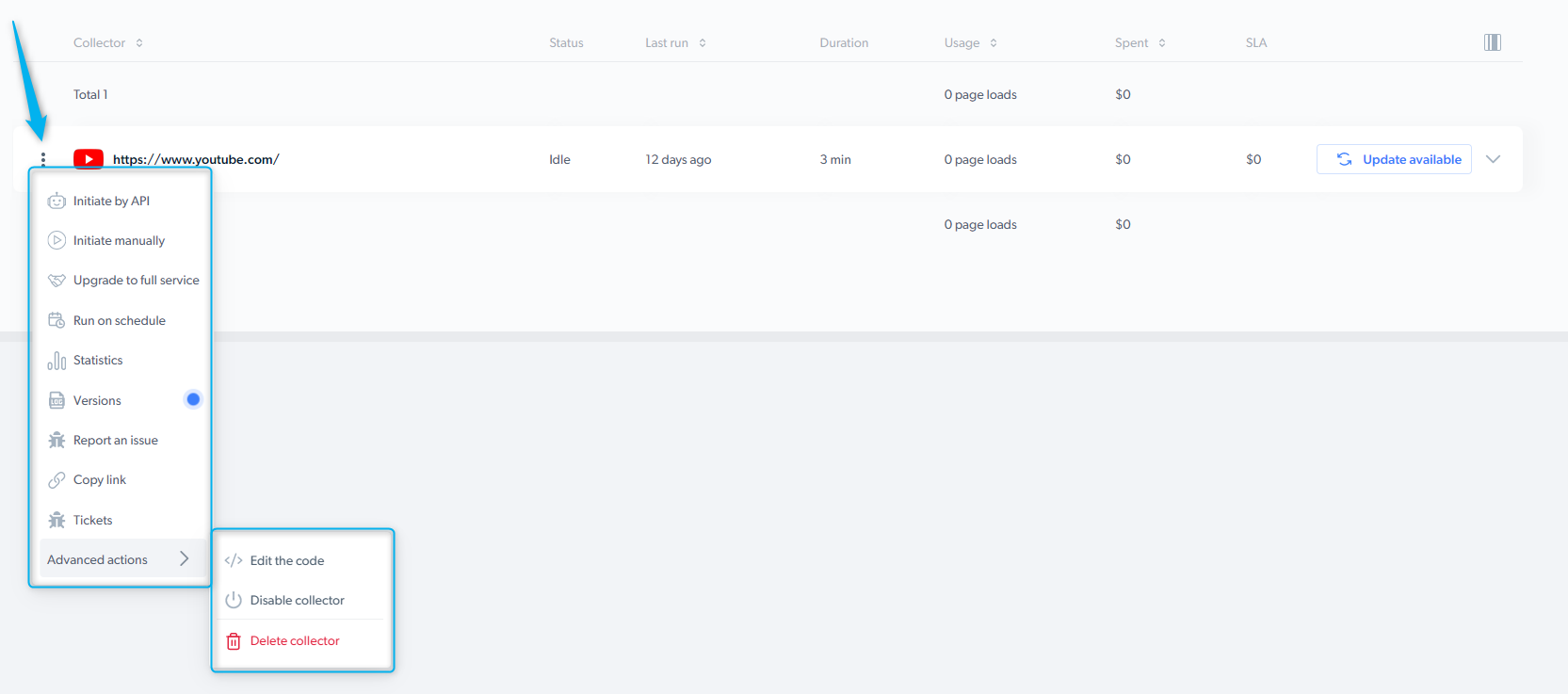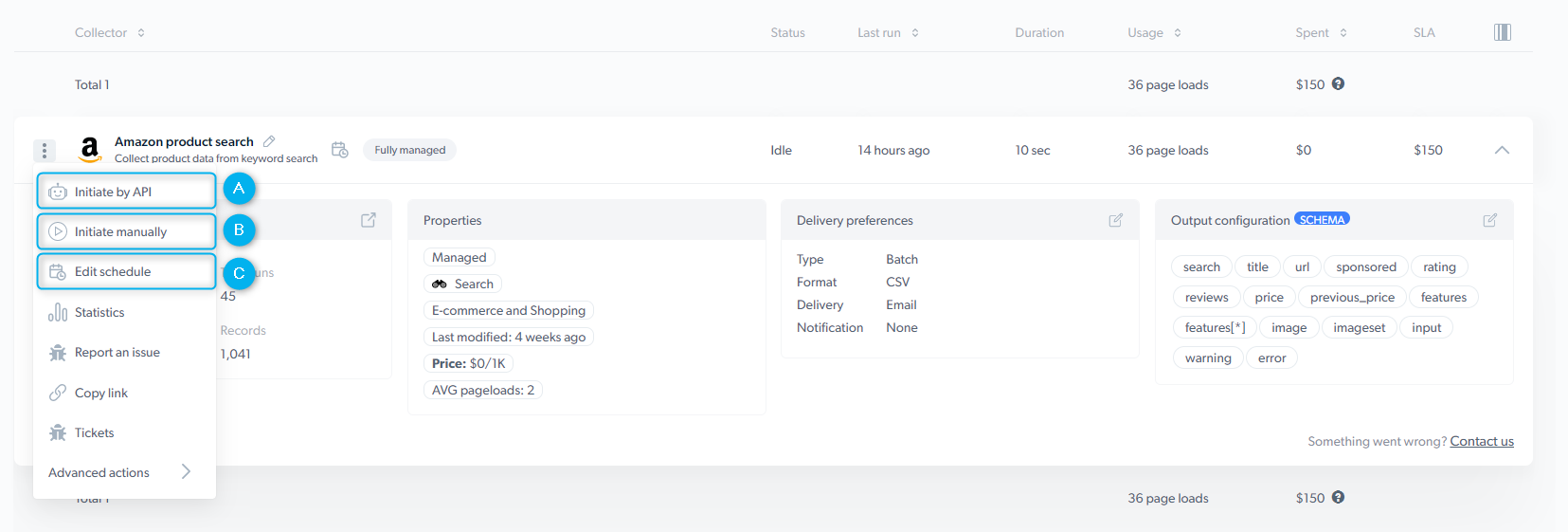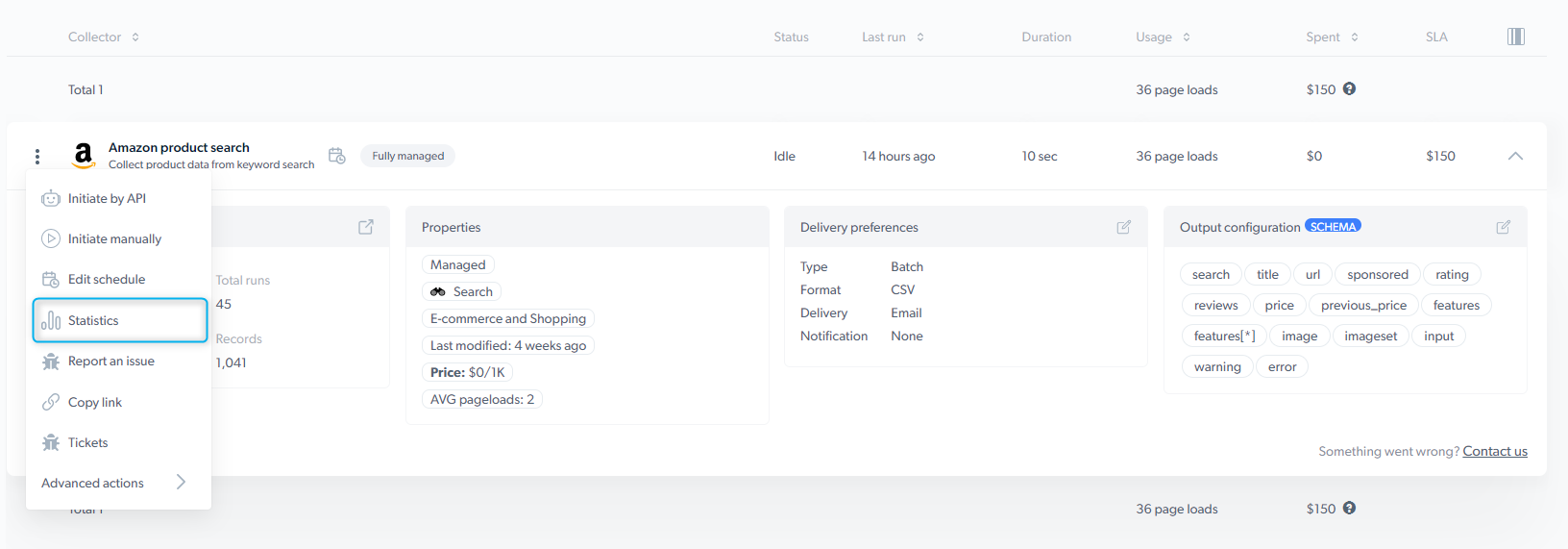Data scraper Dashboard

Overview
- Free trial: As part of the 7-day free trial, you’re entitled to 1,000-page loads
- Update available: A new version of the scraper is available. If there is no update button, you have the latest version.
- Properties: This is where you’ll see all the scraper properties. Learn more
- Delivery preferences: Choose your desired file format, delivery method, and notification settings. Learn more
- Output configuration/ Schema: Here, you can go back to edit your output definitions. Learn more
- Limitations - Our collectors have a limitation of 100 parallel-running jobs. When more than 100 jobs are triggered, the additional jobs are placed in a queue and wait until the earlier ones finish.
Scraper action menu
The scraper action menu allows performing different actions with the scraper.- Initiate by API - start a data collection without having to enter the control panel
- Initiate manually - Bright Data’s control panel makes it easy to get started collecting data
- Run on schedule - select precisely when to collect the data you need
- Versions - review the modified versions of the scraper
- Report an issue - You can use this form to communicate any problems you have with the platform, the scraper, or the dataset results
- Copy link - copy the link of the scraper to share it with your colleagues
- Tickets - view the status of your tickets
- Advanced options:
- Edit the code - edit the scraper’s code within the IDE.
- Disable scraper - temporarily disable the scraper, but you can reactivate it if needed.
- Delete scraper - permanently delete the scraper.

Properties:

- Maintainer of the scraper :
- Self-serve: scraper is maintained by you
- Full-service: scraper is maintained by Bright Data Developers
- Type of the scraper :
- Search : The scraper input is a keyword (i.e., iPhone)
- PDP : The scraper input is a product page URL
- Discovery : The scraper input is a category URL
- Other
- Use case of the scraper (Social media, eCommerce, Travel, etc.)
- Last modified : indicates when the scraper was last updated
- Price of CPM : 1 CPM = 1,000 page loads.
- Avg. Page-load per input : Average number of loaded pages to process 1 input set
Initiate scraper and get collection results
Initiate scraper To start collecting the data, you have three options: A. Initiate by APIB. Initiate manually
C. Schedule a scraper

Realtime job input and output cannot be downloaded since it is not stored on our end
Statistics


- 3 dots Here you can perform different functions with the data collection job: The statistics page presents essential information about the success of the data collection. Below is a list of all the terms included in the statistics table:

- Job ID - The unique id of the collection
- Trigger - The person who initiated the data collection and how (API, manually or scheduled)
- Inputs - The number of inputs inserted into the collection
- Records - The number of results collected
- Failed - The number of pages failed to be crawled
- Success rate - The percentage of the results that were successfully collected
- Queued at - The queue timestamp
- Started at - The date and time when the scraper began collecting
- Finished at - The date and time when the scraper finished collecting
- Job time - The length of time it took to complete
- Estimated time left - The amount of time left until collection is complete
- Queue - The name of the job given in the trigger behavior (Queue name)
- Usage - The total amount of page loads used
